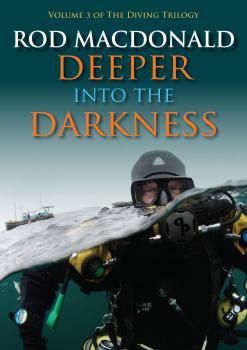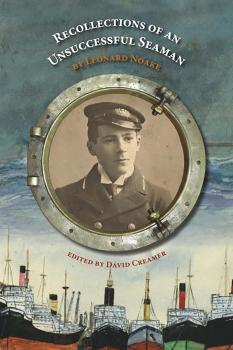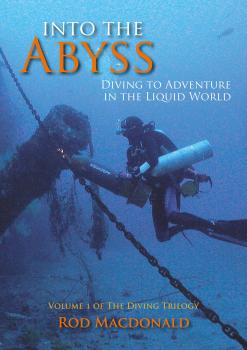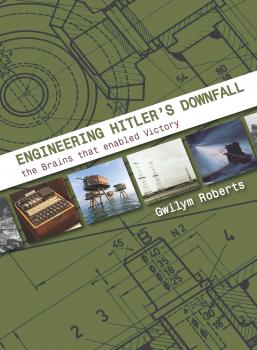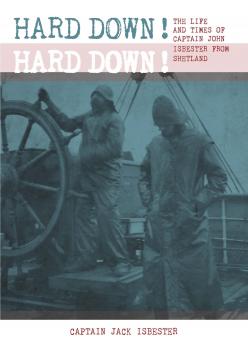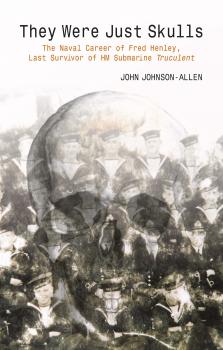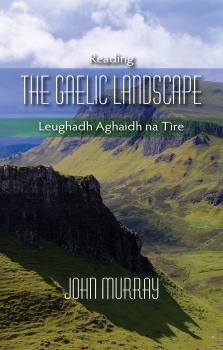MREADZ.COM - много разных книг на любой вкус
Скачивание или чтение онлайн электронных книг.Deeper into the Darkness
In Deeper into the Darkness Rod takes the reader diving to explore many more famous wrecks around the UK from the Great War. These include HMS Pathfinder and HMS Audacious – the first British battleship to be lost to enemy action in WWI. The wreck of HMS Hampshire on which Lord Kitchener perished on a secret mission to Russia in 1916 is visited along with HMS Vanguard, which blew up at anchor in 1917 in Scapa Flow. The K-class submarines lost in the Firth of Forth during the Battle of May Island in 1918 are dived, along with UB-116, the last German submarine to be sunk in action in October 1918. Rod then leaps forward in time to the Pacific during WWII and visits the American shipwrecks from the Battle of Guadalcanal, along with daring penetrations into the stunning Japanese wrecks lying at the bottom of the Truk and Palau Lagoons. The development of technical diving is brought up to the present day where closed circuit rebreathers utilising mixed breathing gases allow Rod to go deeper into the depths in search of lost shipwrecks.The wreck of the SS Creemuir, torpedoed and sunk off north-east Scotland in 1940, was first dived by Rod in 2012. This exploration reveals the human side of shipwrecks when Rod’s team recover the Creemuir’s bell and present it to the sole surviving crewman, Royal Navy Radio Officer Noel Blacklock. The latest developments in shipwreck exploration taking place at Scapa Flow are recounted before the book concludes with the scandalous desecration of the naval war graves of many nations at Jutland, the South China Sea and the Java Sea.
The Green New Deal and Beyond
– We know other authors have Green New Deal books in the works; most will be urging support for the Green New Deal (The subtitle of Naomi Klein’s September 2019 book «On Fire» is «The (Burning) Case for a Green New Deal»). Some may call for combining GND features with carbon taxes, futuristic technologies, and other mechanisms, even including nuclear power. –This is the only book offering a «deep green» solution. Stan Cox advocates for: a direct, declining cap on fossil energy; recognition of the limitations of wind and solar; the need for a society that lives on less energy; the allocation of energy and resources toward meeting universal needs and away from wasteful and luxury production; and fair-shares rationing of energy for years. – Stan Cox’s publishing profile, career, and education positions him has as a credible, common-sense voice for the necessity of making changes to national policy, social norms, and individual lifestyles to prevent catastrophic climate change. – All reputable science indicates that climate change will accelerate and intensify if human use of fossil fuels is not immediately and massively cut and replaced with sustainable sources of renewable energy. This book looks past the proposed Green New Deal to find a way this is actually possible. – Fighting climate change is emerging as the single most important issue of our time –This book is written in clear language for all types of readers, and the book’s proposed solutions are concrete, common sense, and accessible. – The author has an impressive press record, including A-list media interviews and Op-Eds for his previous books including NPR Morning Edition, Marketplace, NPR's «1A», MSNBC, On Point, Here and Now, 99 Percent Invisible podcast, The Weather Channel, WNYC/NPR's The Brian Lehrer Show, CBC Radio, Salon, Architect Magazine, VICE Motherboard, ABC News, Chicago Tribune, Economist, Daily Mail, FOX Business. Featured stories in New York Times, LA Times, Boston Globe, Macleans, and National Post. Op-eds in Washington Post, NY Times, Guardian, Yale e360, Al Jazeera, and the Pacific Standard.
Recollections of an Unsuccessful Seaman
Born in 1887, George Leonard Noake joined the nautical training establishment, HMS Conway, in 1903. He then served an apprenticeship at sea until 1908 when his detailed memoirs commence, sailing as a second officer in the European/West African trade. After going ashore to work on a farm between 1913 and 1915, he returned to the mercantile marine in 1915 during the First World War to sail in a number of ships carrying horses, grain and coal. He survived not only being torpedoed in the English Channel, but also making 112 trips between England and Europe on a ship carrying war materials. Subsequently joining one of the largest tankers in the world, he endured a hazardous passage without a naval escort through the Channel to Rosyth to deliver safely the precious oil cargo before hostilities ended. The narrative of his wartime experiences is both harrowing and humorous. The tanker continued to trade in peacetime between Mexico and South America before eventually returning to Hull, where he signed-off to see his family after being away for seven months. During war reparations he travelled to the East as a passenger, sailing as second officer on board a German vessel bound for Europe, where the Depression after the war gave him no hope for further seagoing employment. Borrowing money from a relative in 1921 he bought into a farm before becoming a haulage contractor. On the verge of bankruptcy in 1923, he escaped his creditors by joining a ship bound for Australia as a quartermaster. Luck was on his side and upon his return home he became master of a ‘Glasgow Puffer’ that had been converted to carry oil. He remained in the employ of the National Benzole Company to take command of three coastal tankers before accepting work as a chief officer on a ship trading in the Mediterranean. His seagoing career as a chief officer ended in 1927 when he was diagnosed with tuberculosis. Readers of this poignant portrayal of life in the 1900s, not only at sea but also ashore, will be thoroughly entertained and moved by the author’s experiences and humour. Leonard Noake was undoubtedly a true character, one who enjoyed more than a tipple or two, a strong supporter of the fledgling unions and an unrelenting critic of shipping magnates and their shareholders. The last chapter of the book has been published without correction or editing allowing readers to make their own judgement of Len, his heartfelt style of writing and passionately-held beliefs.
Into the Abyss
Into the Abyss, the first volume in The Diving Trilogy, is a fascinating collection of true life diving adventures from Rod’s long and varied diving career. It follows his progression from novice diver in the 1980s through the dangers of the deep air diving era and on to trimix diving in the 1990s where divers began to use commercial mixed breathing gases as the sport of technical diving was born. This opened up vast, previously inaccessible, swathes of the seabed, ushering in a great era of discovery of virgin shipwrecks, lost in time.
Engineering Hitler's Downfall
Whilst living in Liverpool, Britain’s second most heavily bombed city during World War II, the author experienced at first-hand the terrible effects of the war on the civilian population and when studying at Cambridge he witnessed the American heavy bombers and their fighter escorts flying to attack targets in Germany and occupied Europe.
Hard down! Hard down!
Hard Down! Hard Down! describes the eventful life of a Shetland man in pursuit of his ambitions – to reach the top in his profession, to find a wife, to cherish a family, to do his job well and to be respected by his peers. The account is enlivened by extracts from numerous well-chosen family letters, diaries and postcards revealing the minutiae of shipboard and family life 120 years ago. These include a bachelor night out in ’Frisco, buying slippers in Dantzig and a captain who changed his underclothes at midweek because he could not remember which weekend his wife had suggested!
Literature of the Gaelic Landscape
From the comfort of an armchair and with the aid of this new book, the reader can travel to the Breadalbane and Argyll of Duncan Bàn Macintyre; the Skye and Raasay of Sorley Maclean; and the Caithness and Sutherland of Neil M. Gunn. Photographs, maps and place-names linked to key passages in the texts will immerse readers in the landscapes which songs, poems and tales have described and enlivened over the ages.
They Were Just Skulls
This compelling story is the result of many hours spent recording the memories of Fred Henley. His life at sea is at the centre of his being and his own words are at the heart of the book. At the age of 14 Fred worked on a Thames sailing barge, then after his training at HMS Ganges, he joined his first ship which took him from the icy Arctic Ocean to the heat of West Africa where the Bismarck and her support ships were hunted. His experiences included visiting Archangel, sailing on Arctic convoys, capturing German supply ships, the failed attack on Oran, landings in Piraeus, Salonika and the French Riviera and operating with special forces in the Greek Islands. There is inevitably some humour when Fred recounts his encounters with girls. The book then explores the tragic loss of his last submarine, HMS Truculent. In the cold January waters of the Thames Estuary, within sight of Southend, over 60 men were lost in a major disaster, just five years after the end of the war. The voices of the survivors are heard telling how they stood in complete blackness in a sunken submarine, waiting for the water to come in so that they could escape to the surface, only for all but a few to drift away and die in the darkness. The story concludes with happier times with Fred visiting ports in the Mediterranean during peacetime as a married man.
Reading the Gaelic Landscape
Following the success of the first edition, this new edition has been expanded and improved with additional images and enhanced drawings. The subject matter has been expanded with the chapter on grammar and pronunciation extended. There are examples of how Gaelic personal names and the human body are used in place-names and many etymological sources have been added to place-name tables. In addition to the generic index, there is now an index of specific place-names. Finally, there’s more to say about hares, bears and boars! Reading the Gaelic Landscape is essential for anyone who is interested in the Scottish Highlands and its native language. It enables people to read and understand place-names in Gaelic, providing insights into landscape character and history. The book enriches the experience of walkers, climbers, sailors, bird watchers and fishers by sketching the named context, where they practise their pursuits. Outdoor enthusiasts need no longer struggle with unfamiliar spellings and words, as they can develop a new perspective of place through an understanding of Gaelic toponymy. The ways Gaelic poets like Sorley MacLean and Duncan Bàn MacIntyre used the named landscape in their work is explored. Names are used to speculate about species extinctions and the history of the Caledonian Forest. Readers learn how place has been defined in Gaelic and how this has been recorded, through a deeper understanding of how native speakers applied their language to the landscape.
Водитель для дочери
Его наняли водителем для избалованной мажорки. Он будет сопровождать девушку везде, станет ее тенью, ее живым щитом. Он постарается не забыть, что она – дочь его врага. Прикажет себе не влюбляться в нее. Но так ли это будет легко, как кажется на первый взгляд?
